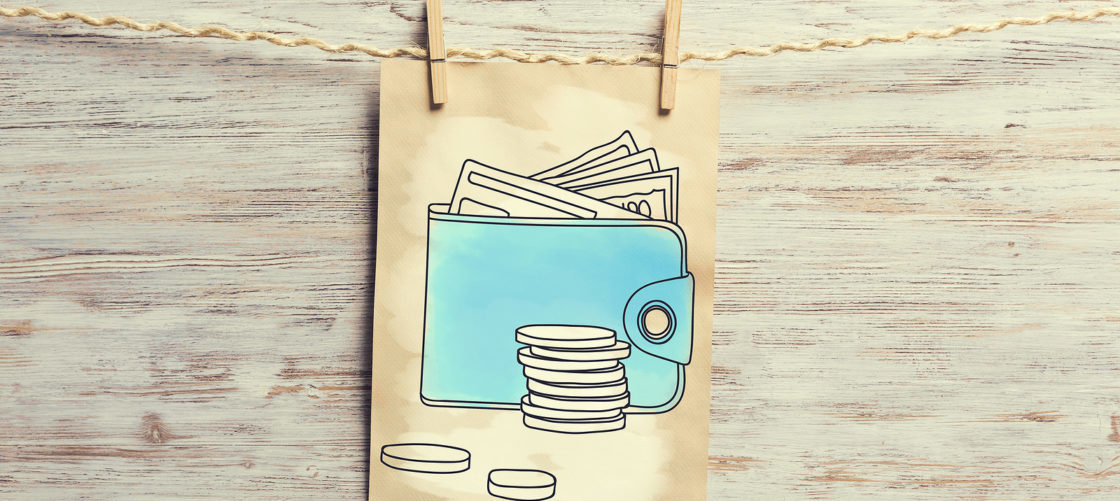This article, originally titled The Thought Process of a Frugal Mind appears here courtesy of our content partner, Mama Fish Saves.
Think frugal living is just for unhappy cheapskates? Heck no! Being frugal is for anyone who wants to reach their money goals while still spending on the things that matter to them. To be frugal and save money you don’t have to reuse paper towels, skip flushing the toilet (ew!), or only eat ramen noodles. You just have to spend more thoughtfully!
Today I’m going to share the decision-making process that helped my husband and me learn how to be frugal. It took some getting used to, but we love the options and freedom it gives us!
What Does It Mean To Be Frugal?
Frugal living is an empowering thing. Practiced thoughtfully, it isn’t meant to represent a life of deprivation or unhappiness. It certainly doesn’t mean you can never spend money or have to become a total cheapskate.
Being frugal is about optimizing the balance between cost and happiness.
Our society encourages quick, constant spending. It is what makes the economic world go round. But while a new pair of shoes or fancy gadget may make us happy in the moment, it is hurting us longer-term. The money stress, debt, and overflowing closets that come with our reckless spending are overwhelming.
Embracing the tenants of frugality mean finding a more consistent level of happiness. One that helps us prioritize our spending towards the things that really matter to us, while not sacrificing our greater goals.
But how do we break our bad spending habits? Well, for Papa Fish and I, it meant practicing a new thought process.
The Thought Process Of A Frugal Mind
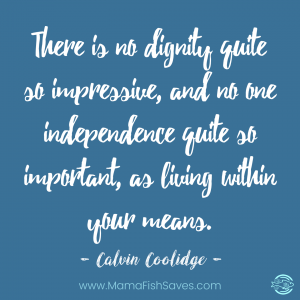 If you want to stop spending money on things that don’t matter, you have to change your mindset. You can’t just see something you want and whip out your phone to order it on Amazon. A truly frugal person makes all their spending decisions thoughtfully.
If you want to stop spending money on things that don’t matter, you have to change your mindset. You can’t just see something you want and whip out your phone to order it on Amazon. A truly frugal person makes all their spending decisions thoughtfully.
These are the questions my husband and I ask ourselves before we buy anything. Sometimes it only takes seconds. Yes, we need more milk. Sometimes it takes longer, like when I want new bread pans or Papa Fish wants a new tool for his woodshop. But going through the process has made us much happier with our spending!
Download a PDF of the thought process in the Freebie Library to keep it fresh in your mind!
Stage 1: Do I need it?
This is by far the hardest question on the list. Differentiating between needs and wants is something we aim to teach our toddlers, but something most of us struggle with ourselves. So ask yourself, do you actually need it? If you only want it, will it really make you happy?
When you feel the impulse to buy something, wait a few days. If you’re like me, within a few days you either (a) won’t need whatever it was any more or (b) you will have forgotten about it. (I do this all the time with baby clothes and cute quilting fabric.) Giving yourself some time will also distance you from any flashy marketing that is blurring your frugal vision.
Has it been a few days and you still have your finger on the “buy” button? On to Stage 2!
Stage 2: Can I make it?
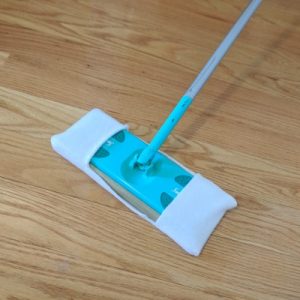 It took 20 minutes and cost $4 to make two dozen reusable Swiffer pads.
It took 20 minutes and cost $4 to make two dozen reusable Swiffer pads.
A lot of what we buy isn’t all that complicated to make, like brownie mix, but companies are profiting off of our desire for convenience. Consider whether something you need to buy could be made with something you already have or for cheaper than buying it.
Free YouTube and web tutorials have made it so you can learn how to do almost anything for free. It is how I taught myself how to sew and quilt. If it seems like you could make something yourself, take a moment to Google how to do it. If it looks doable, give a go!
Let’s not go crazy here though. You don’t need to be cobbling your own shoes or sewing all your kids’ clothes. Your time does have value and the materials to make those things could end up costing more anyway. Just be aware of the option. So much of frugal living is about being aware of your choices.
Do you still need whatever you’re considering buying? Can’t make it? On to Stage 3!
Stage 3: Can I borrow it?
If you only need something short-term, or if you aren’t sure you’ll enjoy it, consider borrowing it first. Ask friends, neighbors, or local Facebook groups if anyone has what you’re looking for and would be willing to lend it to you. Not only could it save you money, but it could also help you develop community!
Be sure to check out your local library for things they might offer besides books! Our library loans out crochet and knitting needles. A library in Orono, Maine offers local seeds for your garden. The Oakland Public Library lends out power tools. You never know what you could find!
When borrowing things, just be sure to return it on time and in the condition you received it.
Can’t borrow it or you have already decided you’ll need it long-term? On to Stage 4!
Stage 4: Can I get it used?
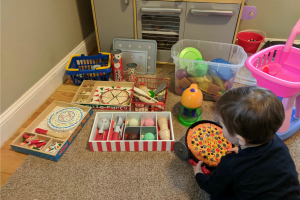 My sister-in-law got Fuss Fish all these play kitchen accessories for free from a local Facebook group!
My sister-in-law got Fuss Fish all these play kitchen accessories for free from a local Facebook group!
We live in a disposable economy. Marketers encourage people to upgrade before things have actually reached the end of their useful life. And most of us fall. This totally sucks for the environment. But it is fantastic if you want to live more frugally.
Constant upgrading and knee-jerk purchases of stuff people don’t really need means there are TONS of high-quality products available used. From barely touched breadmakers to low-mileage cars and like-new clothing, if you want it, someone has it used.
Check your local thrift stores, LetGo, Craigslist, and join your local Buy Nothing group to see if they have what you need.
There’s a major bonus if you find it in your Buy Nothing group! As the name implies, everything in there is being given away for free! We’ve received and given away some great stuff in our group!
Can’t find it used? It is time for the final stage!
Stage 5: Buy it!
You’ve made it to Stage 5! If after carefully considering all the options above you still want to buy, that is great. Budget for the item, find the best price, and buy without guilt.
As a natural saver, I used to struggle with spending money, even when it was something I really wanted or needed. I would feel worried about some unknown future event where I might need the money I had spent for something else. And it kept me from enjoying what I had.
When you buy something using the frugal thought process, be confident that you are spending money on something that matters. Whether it’s something you need, something that makes your life easier, or something that brings you joy; just enjoy it.
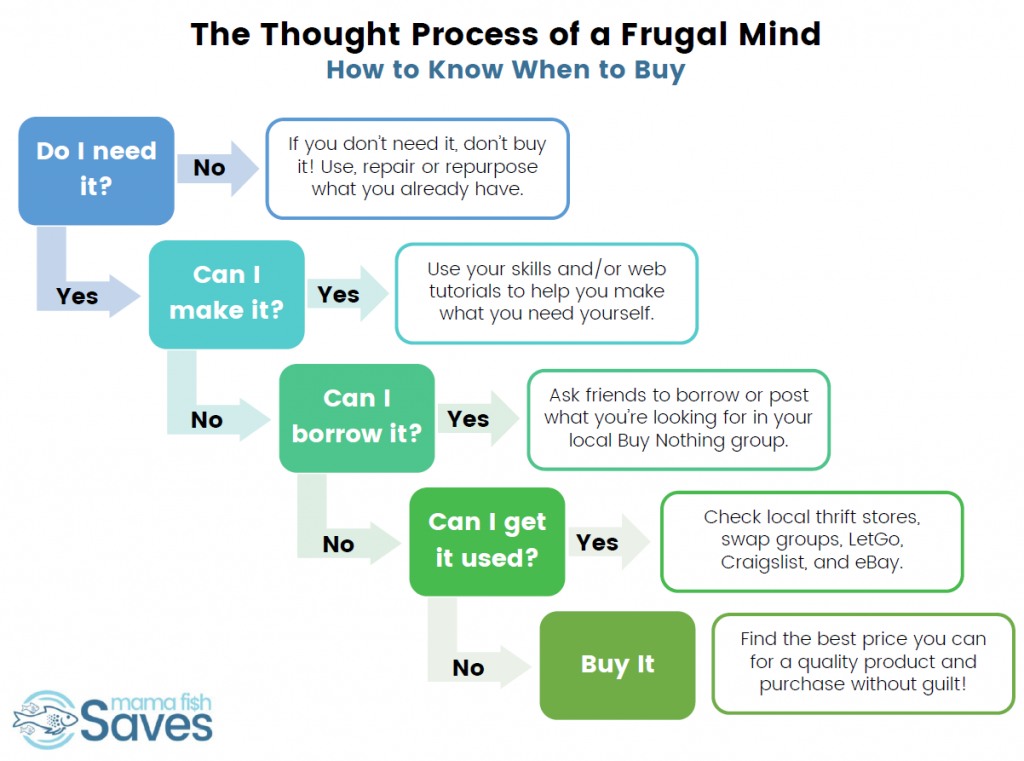
The Frugal Mindset Challenge
I challenge you to print this frugal thought process and put it up in your home. For 30 days, try to consider every question on this list for every purchase you want to make. Jot down every expense where you were able to stop before Stage 5. You’ll be amazed by how much you save. And how little you miss.
Are you on Instagram? Follow me and share your frugal mindset wins with the hashtag #FrugalMindsetChallenge! I want to see how you are prioritizing the things that matter to you! My husband and I will be sharing our frugal choices there as well.
If you want to build better money habits, you have to break out of the ones you already have. It will take some practice, but living frugally means less stress, less waste, and more joy! It is well worth the effort!
The views and opinions expressed are those of the guest author and do not necessarily reflect the views and opinions of MindShift.money.
image credit: Bigstock/Sergey Nivens
